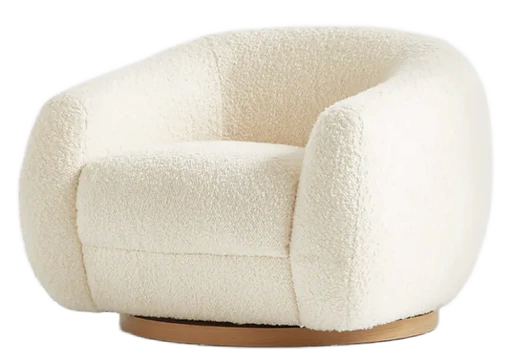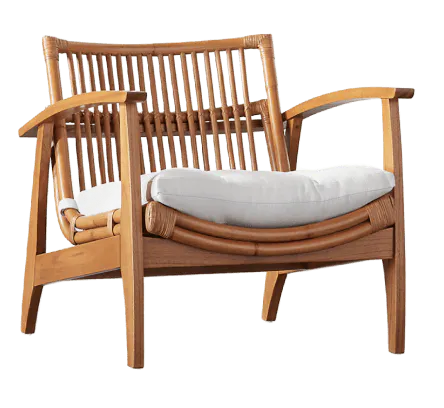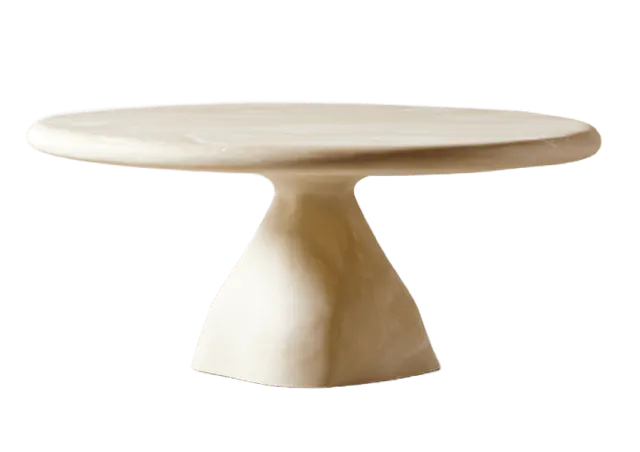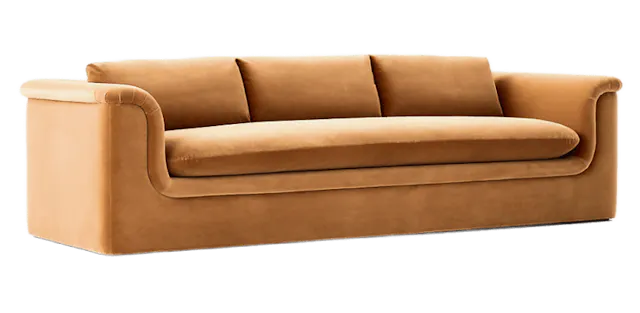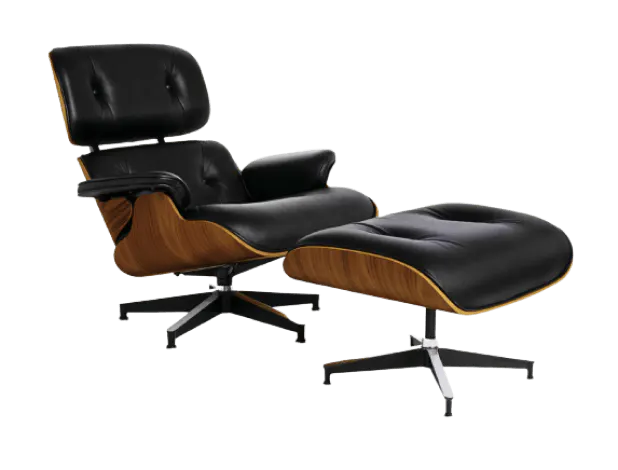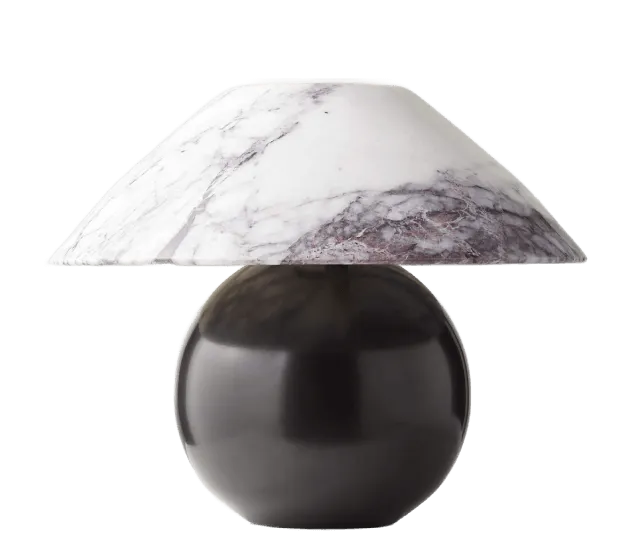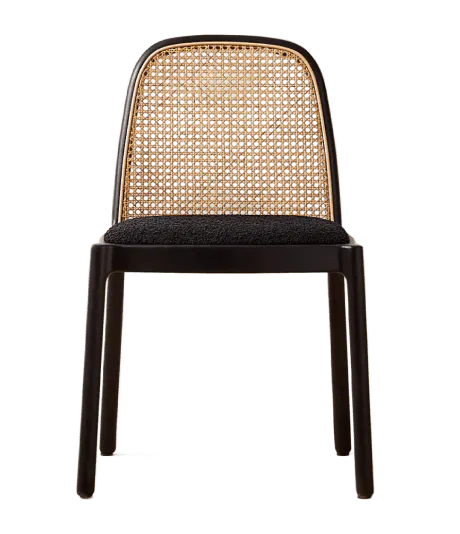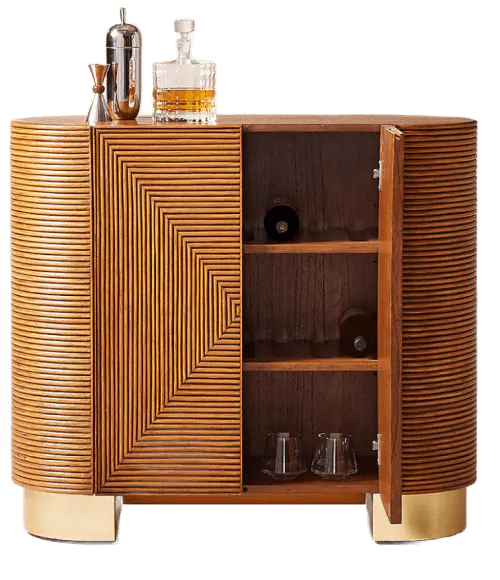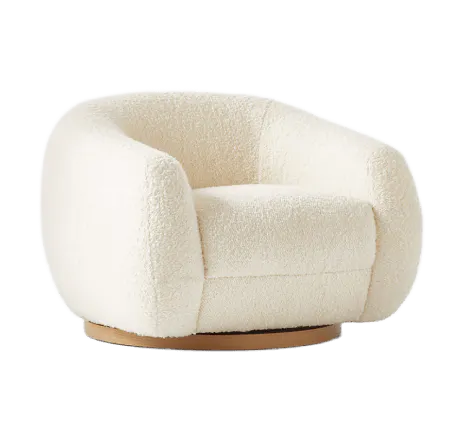Choose a Statement Bed Frame
A bed isn’t just a piece of furniture—it’s the focal point of the room. The right frame sets the style, adds comfort, and makes the space feel complete.
Types of Bed Frames
The material and design of a bed frame affect both its look and feel. Some popular choices include:
Upholstered beds – Soft and elegant, often in velvet, linen, or leather. Tufted designs add a classic touch, while smooth finishes feel modern.
Wooden frames – Versatile and sturdy. Light wood gives an airy feel, while dark-stained wood feels warm and rich.
Metal frames – Sleek and minimal. Black iron works well for industrial or farmhouse styles, while brass adds a vintage feel.
Canopy beds – Tall and dramatic. Great for high ceilings, a canopy bed makes a room feel grand.
Choosing the Right Size
A bed frame should fit both the space and the sleeper’s needs:
King-size – Offers plenty of space but can crowd a smaller room. Best for master bedrooms over 12x12 feet.
Queen-size – A good balance of comfort and space. Works well in rooms at least 10x10 feet.
Full-size – Ideal for solo sleepers or guest rooms. Needs at least 9x9 feet of space.
Twin-size – Perfect for kids’ rooms or tight layouts. Fits in spaces as small as 7x10 feet.
Placement & Design Details
The bed’s position impacts both style and function. The best layout:
Centered on the longest wall – Creates balance in most rooms.
Against a corner – Saves space in small bedrooms but limits access.
With floating nightstands – Keeps the look modern and uncluttered.
A bold headboard adds personality. Options include tufted fabric, carved wood, or oversized panels for a dramatic effect. A statement bed isn’t just for sleep—it’s the centerpiece of the room.
Set the Right Color Palette

Image: Creative Luxury Multi-round Metal Wall Decor Home Hanging Art Multi-color Living Room
Color isn’t just for looks—it affects how a room feels. A well-chosen palette makes a bedroom calm, cozy, or even dramatic. The key is balance.
Choosing the Right Base Color
The wall color sets the foundation for the entire space. Some popular choices include:
Neutral tones – White, taupe, or gray work with any style and allow flexibility in decor.
Dark shades – Deep blue, forest green, or charcoal add warmth and depth, creating a more intimate feel.
Soft pastels – Blush pink, sage green, or powder blue bring lightness and a touch of color without overwhelming the space.
Layering for Depth
A bedroom feels more polished when colors are layered. The three-color rule helps create balance:
Base color – Usually the wall shade, acting as the backdrop.
Secondary shade – Found in larger furniture pieces like the bed frame or dresser.
Accent hue – Used in smaller decor elements like pillows, throws, or artwork.
If the walls are neutral, adding richer shades in bedding, rugs, or curtains makes the space feel dynamic.
Lighting & Color Perception
Light affects how colors appear throughout the day.
Natural light – Brings out true tones, making soft colors look even brighter.
Warm artificial lighting – Enhances earthy tones, making them feel cozier.
Cool LED lighting – Works well with modern color schemes but can make some shades look harsh.
Testing paint samples at different times of day ensures a color still looks good under different lighting conditions.
Using Contrast to Avoid Flatness
A room with only one tone can feel dull. Contrasting elements bring dimension.
Bold accents – Navy bedding against white walls, mustard pillows on a gray sofa.
Dark trims – Black or charcoal window frames create a modern, refined look.
Patterned decor – Striped or floral throw pillows add visual interest.
The right color palette makes a bedroom feel curated, not chaotic. It’s all about balance, contrast, and how light interacts with color.
Optimize Bedroom Furniture & Storage
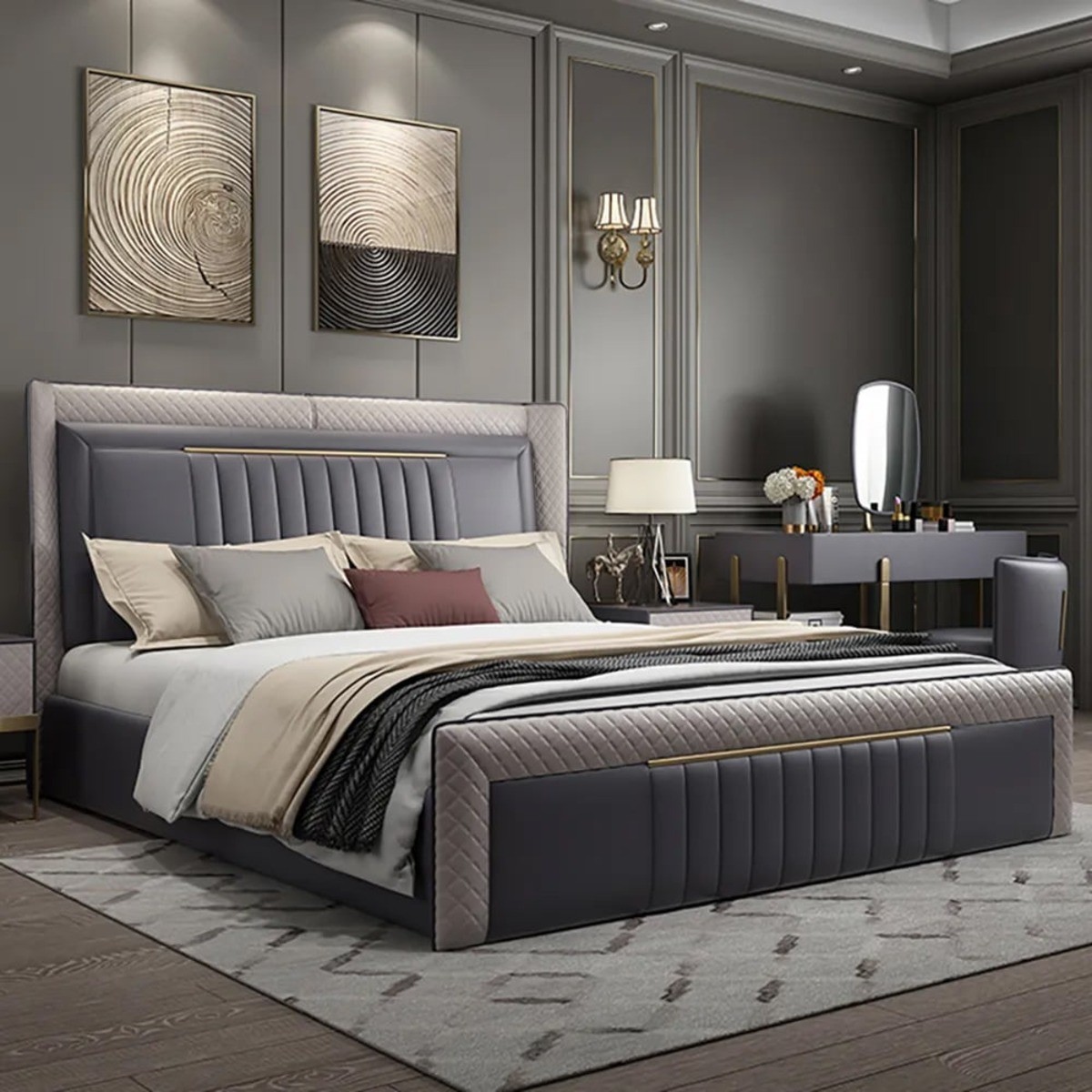
Image: Queen Low Profile Platform Bed Upholstered Wingback Bed in Gray
Storage isn’t just about organization—it affects how a bedroom feels. Too much furniture can make a space feel crowded, while too little storage leads to clutter. The key is finding the right balance between function and style.
Choosing the Right Storage Furniture
Every piece should serve a purpose without overwhelming the space.
Multi-purpose furniture – A bed frame with built-in drawers or a lift-up storage base saves floor space.
Scaled dressers – A low, wide dresser works well in larger rooms, while a tall, narrow one, like this tall black wood four-drawer dresser, suits compact spaces.
Nightstands with storage – Options with drawers or shelves keep essentials within reach without adding clutter.
Maximizing Vertical & Hidden Storage
When floor space is limited, going vertical helps.
Floating shelves – Provide storage without taking up floor space. Ideal for books, plants, or framed photos.
Wall-mounted hooks or racks – Perfect for hanging accessories like hats, bags, or scarves.
Built-in wardrobes – The best option for seamless storage, but if unavailable, floor-to-ceiling closets help maximize space.
Utilizing Under-Bed Storage
The area under the bed is often wasted, but it’s great for hidden storage.
Rolling storage bins – Easy access for seasonal clothes, shoes, or extra bedding.
Hydraulic-lift beds – Offer a larger hidden compartment for bulky items.
Bed risers – Create extra space under the bed for storage boxes in small bedrooms.
Balancing Open & Closed Storage
A room packed with storage can feel overwhelming. A mix of concealed cabinets and open shelving creates balance.
Closed storage – Keeps everyday clutter out of sight (drawers, wardrobes, and covered bins).
Open shelves – Showcase books, decor, or meaningful objects without making the space feel cramped.
Baskets or decorative boxes – Provide organization while adding texture to the room.
A well-organized bedroom isn’t just tidy—it feels more open and comfortable. Smart furniture choices and strategic storage placement make all the difference.
Enhance Lighting for Ambiance & Functionality
Lighting does more than brighten a room—it creates atmosphere. The right setup makes a bedroom feel warm, inviting, and functional. A single overhead light isn’t enough. Instead, layering different sources balances brightness and comfort.
Types of Bedroom Lighting
Each type serves a different purpose, and using them together makes the space feel complete.
Ambient lighting – The room’s main light source. Options include ceiling fixtures, recessed lights, or track lighting. Dimmers help control brightness throughout the day.
Task lighting – Focused light for reading, working, or getting ready. This includes bedside table lamps, wall sconces, or adjustable desk lights.
Accent lighting – Adds warmth and depth. LED strips behind headboards, under-bed lighting, or small spotlights can highlight features without overpowering the room.
Choosing the Right Fixtures
The best fixture depends on the ceiling height and room size.
Tall ceilings – Chandeliers, pendant lights, or statement fixtures make a bold impact.
Low ceilings – Flush-mount or semi-flush lights provide even illumination without making the room feel cramped.
Wall-mounted fixtures – Free up space on nightstands while adding focused light.
Optimizing Light for Function & Comfort
Brightness and color temperature affect how a space feels.
Cool white light (4000K–5000K) – Helps with focus and wakefulness. Best for morning routines or workspaces.
Warm white light (2700K–3000K) – Creates a relaxing, cozy feel. Ideal for winding down at night.
Smart bulbs – Offer adjustable brightness and color settings, allowing customization based on mood or activity.
Creating a Layered Lighting Effect
Using multiple light sources prevents harsh shadows and improves balance.
Soft uplighting – Adds depth and warmth, making walls feel taller.
Under-bed lighting – A subtle glow for nighttime visibility.
Mirror lights – Perfect for vanities, helping with grooming and makeup application.
The goal is a bedroom that adapts to different needs—bright when necessary, soft and relaxing when it’s time to unwind.
Incorporate Luxurious Textures & Materials

Image: Modern Bedroom Boucle White Bench Upholstered Ottoman with Storage & Gold Legs
Texture transforms a bedroom from plain to inviting. A mix of fabrics, materials, and layers adds warmth and depth, making the space feel cozy and well-designed. Without texture, even the most stylish room can feel flat.
Bedding for Comfort & Style
The bed is the centerpiece of the room, and the right materials make a big difference.
Egyptian cotton sheets (300+ thread count) – Soft, breathable, and durable for year-round comfort.
Linen or velvet headboards – Linen feels airy and relaxed, while velvet adds plushness and a rich texture.
Layering blankets and throws – A chunky knit throw, faux fur blanket, or quilted bedspread makes the bed feel extra inviting.
Rugs for Warmth & Definition
A well-placed rug makes the bedroom feel more grounded and comfortable.
High-pile rugs – Soft and warm underfoot, ideal for stepping out of bed in the morning.
Woven jute or wool rugs – Add texture and structure while keeping the room from looking too plain.
Layered rugs – A small plush rug over a larger woven one creates depth and visual interest.
Curtains for Softness & Functionality
Window treatments do more than block light—they complete the room’s design.
Floor-length linen or silk drapes – Make the space feel polished and luxurious.
Sheer panels – Let in soft daylight while maintaining privacy.
Layered curtains – Combine blackout and sheer curtains for flexibility—brightness during the day, darkness for sleep.
Additional Textures for a Finished Look
Small details enhance the overall feel of the room.
Upholstered furniture – A fabric-covered bench ottoman or upholstered bed adds softness.
Decorative pillows – A mix of velvet, silk, and knit fabrics creates dimension.
Wood and metal accents – A reclaimed wood nightstand or a brushed brass lamp adds contrast.
Balancing these elements makes the bedroom feel stylish and inviting without being overwhelming. The goal? A mix of textures that looks and feels just right.
Create a Personalized & Stylish Accent Wall

Image: 3D Mute Metal Wall Clock with Gold Pendulum Modern Round Decor Art Bedroom
An accent wall adds depth and character without overwhelming a space. It’s a focal point that draws the eye, making the bedroom feel more polished and intentional. The wall behind the bed is usually the best spot, but the design should complement the room—not overpower it.
Paint for a Simple, Bold Statement
Paint is the easiest way to create an accent wall.
Dark colors (deep navy, charcoal, forest green) add drama and sophistication.
Soft pastels or earthy tones (sage, blush, terracotta) create warmth without feeling heavy.
Two-tone walls or ombre effects add extra dimension without extra materials.
Matte finishes feel modern, while satin or eggshell reflects light subtly. For extra depth, painting the ceiling the same color as the wall makes the space feel seamless.
Wallpaper for Pattern & Texture
Wallpaper introduces texture, pattern, and personality.
Geometric designs add a structured, modern feel.
Floral or nature-inspired prints bring softness and warmth.
Textured wallpaper (grasscloth, linen, faux brick) adds depth without bold patterns.
For a renter-friendly option, peel-and-stick wallpaper is removable and easy to change.
Structural Elements for Custom Design
Physical details make an accent wall feel built-in.
Wood paneling (shiplap, slats, or reclaimed planks) adds a rustic or contemporary touch.
Board-and-batten or wainscoting creates dimension with classic appeal.
Grid patterns or thin molding strips add subtle elegance without overwhelming the space.
Painting these elements the same color as the wall keeps them understated, while contrasting tones highlight the details.
Alternative Accent Wall Ideas
Not ready for paint or structural changes? Other options work just as well.
Large-scale wall art (oversized prints, murals, or tapestries) makes a statement.
Gallery walls (a mix of framed prints, photos, and decor) add a personal touch.
Fabric panels or upholstered sections soften the space while adding texture.
The goal? A well-balanced design that enhances the bedroom’s style without competing with other elements.
Integrate Natural Elements for a Tranquil Atmosphere
Nature brings warmth and balance to a bedroom, making it feel more inviting. Wood, stone, and greenery soften modern interiors, preventing them from feeling cold or sterile. Even small natural details can create a calming effect.
Use Wood for Warmth & Texture
Wood adds a natural, organic feel that makes a space feel grounded.
Solid oak or walnut bed frames (like this sold oak wood frame upholstered bed) offer durability and timeless style.
Rattan or bamboo nightstands bring in light, airy textures.
Reclaimed wood dressers or shelves add character with visible grain patterns.
For a subtle touch, wood picture frames, decorative bowls, or woven baskets create warmth without taking up much space.
Incorporate Stone for Balance
Stone elements add a sense of stability and contrast beautifully with soft textures.
Marble-topped nightstands or coffee tables feel elegant and durable.
Ceramic vases, stone trays, or sculptural decor introduce natural patterns.
Travertine or slate accents provide depth without overwhelming the space.
Polished stone looks refined, while matte or rough-cut finishes feel more rustic and organic.
Add Plants for Freshness & Air Quality
Plants do more than decorate—they purify air and enhance relaxation.
Snake plants filter toxins and thrive in low light.
Pothos vines are easy to grow and drape beautifully from shelves.
Fiddle-leaf figs make a bold statement in larger rooms.
If space is limited, hanging planters, wall-mounted pots, or small succulents offer greenery without cluttering surfaces.
Maximize Natural Light for an Open Feel
Natural light enhances a room’s energy, making it feel more spacious and lively.
Large windows let in daylight, reducing the need for artificial lighting.
Sheer curtains maintain privacy while keeping the room bright.
Mirrors reflect light, making dim spaces feel more open and airy.
A well-lit, nature-inspired bedroom feels peaceful—an escape that connects the indoors with the outside world.
Design for Comfort & Smart Functionality
A well-designed bedroom isn’t just about looks—it needs to function effortlessly. Thoughtful choices in furniture placement, technology, and temperature control create a space that feels both inviting and practical.
Optimize Furniture Placement for Better Flow
A cluttered room feels cramped, while a well-planned layout makes movement easy.
Keep at least 30 inches of clearance between large furniture pieces for a natural walkway.
Position the bed with access on both sides, allowing for easy entry and balanced symmetry.
Choose the right-sized furniture—oversized pieces overwhelm small rooms, while too-small items make a space feel empty.
For added convenience, floating nightstands, built-in storage, or under-bed drawers, like this upholstered platform bed with drawers, keep essentials within reach without adding bulk.
Use Smart Tech for a Relaxing Atmosphere
Technology can make a bedroom more comfortable with minimal effort.
Dimmable lights or smart bulbs adjust brightness based on time of day.
Programmable thermostats keep the room at the ideal sleeping temperature.
Automated blinds control light without having to get up.
For noise control, sound machines or white noise apps help block out distractions, creating a better sleep environment.
Regulate Temperature for Comfort
The right bedding keeps you comfortable in any season.
Cooling sheets (bamboo or percale cotton) are breathable and moisture-wicking, ideal for warm climates.
Flannel or down bedding provides extra warmth in colder months.
Weighted blankets offer gentle pressure that reduces stress and promotes deeper sleep.
A bedroom that balances comfort and function feels effortless—where every element works together for a restful, stress-free space.
Final Thoughts
A well-designed master bedroom isn’t just about looks—it’s about creating a space that feels good to wake up in and unwind at the end of the day.
The right bed frame, thoughtful lighting, smart storage, and a balanced color palette all work together to shape a space that’s both functional and inviting.
The best part? No two master bedrooms are the same. Whether it's a bold accent wall, luxurious textures, or integrated smart features, the details make the difference.
And sometimes, the smallest tweaks—better lighting, a new rug, or fresh bedding—can have the biggest impact.
If you're looking for budget-friendly furniture, try Dupe to find stylish alternatives without overspending.
FAQ
How can feng shui improve a master bedroom layout?
Feng Shui can improve a master bedroom layout by promoting balance and harmony, ensuring a peaceful and restful environment. Key principles, such as positioning the bed in a commanding position and minimizing clutter, enhance sleep quality and relationship dynamics.
What are some modern master bedroom design ideas?
A modern master bedroom design focuses on clean lines, neutral bedroom colors, and simple furniture and decor. White walls create a fresh look, while dark wood or light wood furniture adds warmth.
Mid-century and contemporary master styles often include statement lighting, a gallery wall, and sleek bedroom furniture. Adding a master suite with a connected master bathroom completes the modern feel.
What are the best bedroom colors for a relaxing atmosphere?
The right bedroom color depends on the mood you want. Gray walls offer a calming effect, while a neutral color scheme with soft blue, green, or beige tones keeps things peaceful.
Bedroom decorating ideas often include white walls for an airy feel or dark wood accents for a cozy touch. A modern farmhouse style mixes warm wood tones with muted hues for a balanced look.
How can I design a small bedroom to feel bigger?
Soft, neutral colors like light blues, greens, and muted grays create a calming, relaxing atmosphere in a bedroom. These colors promote tranquility and restful sleep while adding a serene, harmonious vibe to the space.
What are some creative bedroom decor ideas for a master bedroom suite?
Creative bedroom decor ideas for a master bedroom suite include adding a statement headboard, incorporating layered textiles like cozy throws and decorative pillows, and using unique lighting fixtures. You can also create a focal point with a bold accent wall or stylish artwork while integrating functional elements like built-in shelves for a personalized, chic touch.
How do I incorporate natural elements into my bedroom interior?
Incorporating natural elements into your bedroom interior can be achieved by using materials like wood, stone, and woven textiles for furniture and decor. Adding plants, natural light, and earthy tones creates a calming, organic atmosphere that connects the space to the outdoors.
What are the latest design trends for a contemporary master bedroom?
The latest design trends for a contemporary master bedroom include clean, minimalist lines, neutral color palettes with bold accents, and a focus on functional, statement furniture. Incorporating mixed materials, like metal, wood, and glass, as well as sleek, modern lighting fixtures, adds sophistication and style to the space.
How can an interior designer help with a master bedroom design?
Interior designers specialize in creating personalized bedroom design ideas that fit your space and style. Whether you're planning a bedroom makeover or need help with bedroom layout, an interior designer can suggest the best bedroom furniture, bedroom colors, and bedroom lighting.
What are some bedroom decorating ideas for a modern farmhouse style?
Bedroom decorating ideas for a modern farmhouse style include combining rustic wood furniture with sleek, contemporary pieces and using neutral tones like whites, grays, and warm earth tones. Adding vintage-inspired accents, soft textiles like linen bedding, and plenty of natural light creates a cozy yet sophisticated farmhouse vibe.
How do I choose the right bedroom furniture for a master bedroom interior?
Choosing the right bedroom furniture for a master bedroom interior involves selecting pieces that balance style, comfort, and functionality. Focus on quality materials, a cohesive design, and pieces that maximize storage and space while ensuring the layout promotes relaxation and easy movement within the room.







